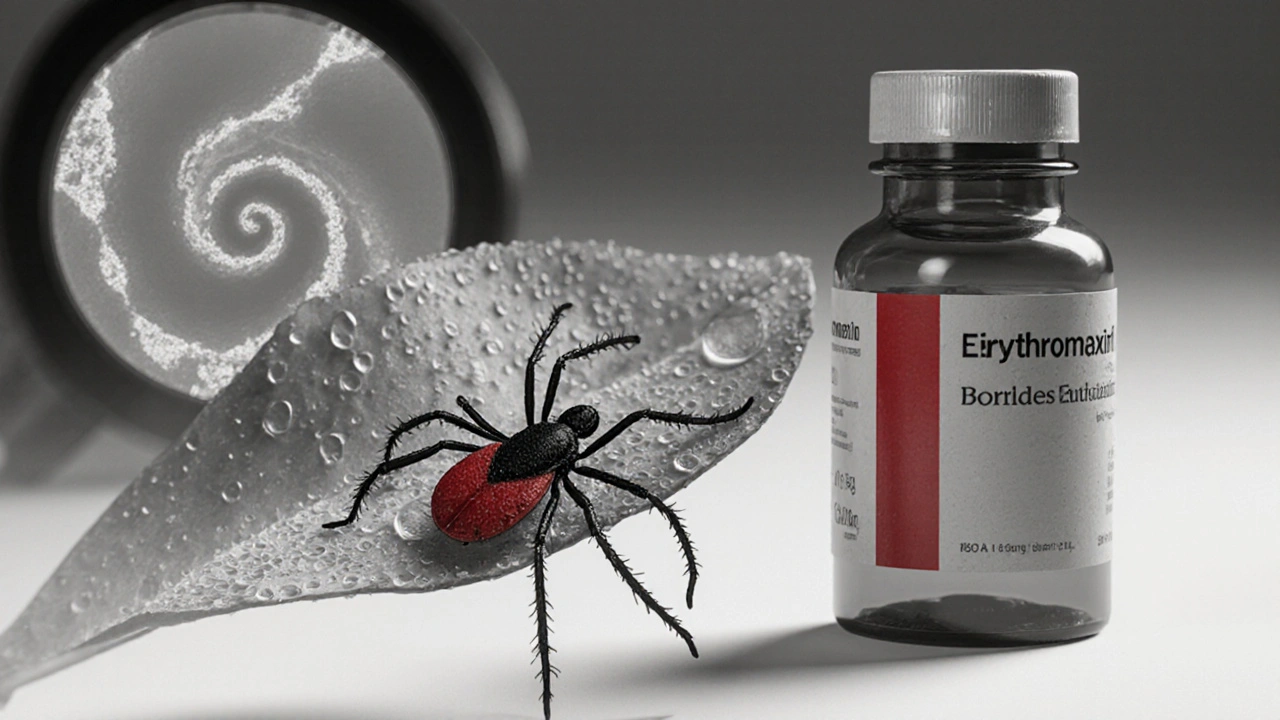Borrelia burgdorferi: Symptoms, Diagnosis and Treatment Guides
When talking about Borrelia burgdorferi, the spiral‑shaped bacterium that triggers Lyme disease. Also known as Lyme disease spirochete, it spreads through tick bites and can affect multiple organ systems if left unchecked.
Understanding Lyme disease, the clinical syndrome caused by Borrelia burgdorferi infection is essential because the disease hinges on three core steps: a tick bite, bacterial invasion, and the host's immune reaction. Ticks, specifically the black‑legged Ixodes scapularis, act as the vector that transfers the spirochete from animal reservoirs to humans. Once the bacterium enters the skin, it can travel to joints, the heart, or the nervous system, leading to a range of symptoms from early skin lesions to later joint pain and neurological issues. Detecting the infection early relies on diagnostic testing, which typically combines an ELISA screening with a confirmatory Western blot. The test's accuracy improves when performed after the infection has been present for at least two weeks, reflecting the time needed for antibodies to develop. Meanwhile, the body’s immune response, involving both innate and adaptive mechanisms, determines whether symptoms resolve quickly or evolve into chronic manifestations.
Effective treatment rests on the right antibiotic therapy, most commonly doxycycline, which targets the spirochete’s protein synthesis. Doxycycline is favored for its oral availability, ability to cross the blood‑brain barrier, and proven success in early‑stage disease. In cases where patients cannot tolerate doxycycline, alternatives like amoxicillin or cefuroxime axetil are used, each with its own dosing schedule and side‑effect profile. The duration of therapy—usually two to three weeks for early disease and up to four weeks for disseminated infection—aims to eradicate the bacteria before it can trigger long‑term immune complications. Recent research highlights that prompt antibiotic use not only shortens symptom duration but also reduces the risk of post‑treatment Lyme disease syndrome, a contentious condition where lingering fatigue and pain persist despite cleared infection.
Below this overview you’ll discover a curated set of articles that dive deeper into each aspect of Borrelia burgdorferi infection. From practical guides on recognizing early rash patterns to detailed comparisons of antibiotic options, the collection equips you with actionable insights. Whether you’re a patient navigating a new diagnosis, a caregiver seeking clear advice, or a health professional brushing up on the latest testing protocols, the posts ahead break down complex concepts into simple, usable information.What You’ll Find Below

Discover whether erythromycin is a viable option for Lyme disease, how it works, dosage, side effects, and how it stacks up against other antibiotics.
Read More